
Below me, the world is split into two unmatched halves, the odd creation of an undecided God. On the left flank of the valley, rocky grey crests soar high from deep gorges, running after each other like petrified waves on the surface of a craggy sea.
But to the right, a stark contrast of rolling green mountains cast constellations of viridian paddies as far as the eye can see. It’s as if Mother Nature had randomly picked two wrong jigsaw pieces, interlocking them at her odd will.
I’m observing this puzzle from a strip of high-altitude asphalt while my rental motorbike makes its way uphill. The road cuts through limestone walls like a dark gash in an ash-toned body. I feel like a tiny anchovy lost in the middle of this solid rock ocean, so stunned I can just inch forward and look beyond the cliff to my left, gulping down at every hairpin bend.

Am I dreaming? No, I just decided to rent a motorbike in Vietnam. The country is a delight to tackle on two wheels, with incredibly diverse scenery from bottom to top. The extreme north, where Vietnam rubs borders with China, arguably offers the country’s best motorcycle adventure.
Vietnam’s northernmost corner has misty landscapes strewn with conical limestone crags, and deep gorges, and is inhabited by mountain tribes who have made these ancestral highlands their barren homeland. If I squint at the horizon hard enough, China’s Guanxi province gazes back at me behind a curtain of puffy clouds.
What I consider the region’s most scenic road trip starts beyond the small and frankly unattractive town of Ha Giang. Here starts a wild 200-mile motorbike loop along a series of divine mountain switchbacks connecting Tam Son, Yen Minh, Dong Van, Meo Vac, and Bao Lac villages. One can complete this route in three leisurely days, but the beauty of the scenery commands for longer stays – especially because Ha Giang’s back roads are still under most travelers’ radars.
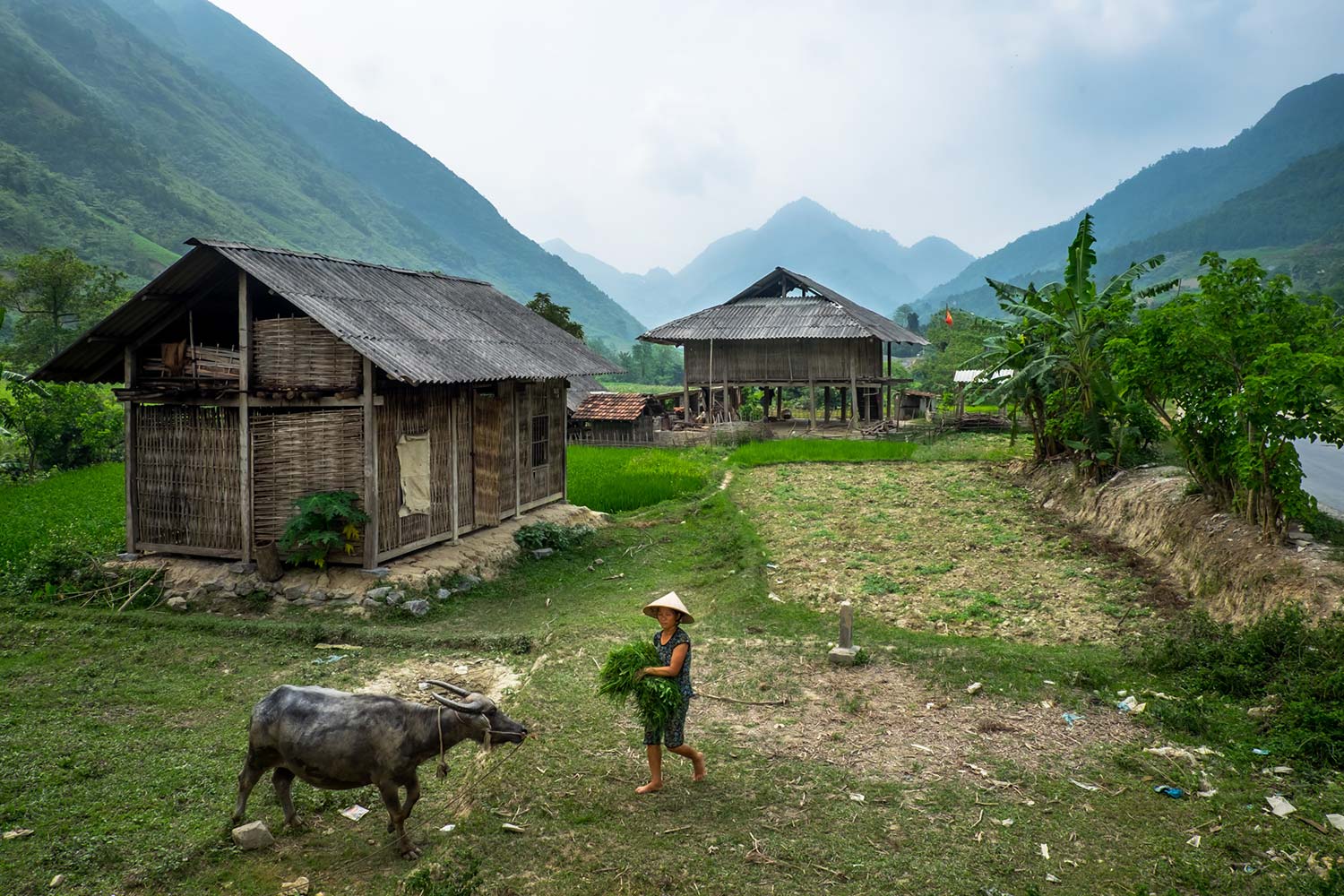
Resting my wheels at the top of a ridge overlooking a bundle of saw-toothed limestone peaks, I can’t say I’m not glad that Ha Giang remains a hushed secret. But I also wonder why. With new accommodation options, a slew of refurbished local restaurants, and the crucial arrival of ATM circuits, travelers should be flocking in like they do to nearby Sapa. To me, negotiating one hairpin bend after the other here is even more rewarding than the popular neighboring hill station.
On my first day, I set off Ha Giang’s town limits, and the road immediately started climbing through forested hills until the Dong Van Geo Park, inscribed by UNESCO in 2011. After two hours rising along cliffs flanked by deep mountain gorges, I stop at a cluster of sharp pinnacles nicknamed “Moon Rocks.”
I meander, stretching my legs from stone to stone, exploring the otherworldly landscape. When I get on my bike again, I end my ascent marvelously at Heaven’s Gate Pass: once upon a time, this was the border of the Hmong kingdom, stretching to Dong Van.

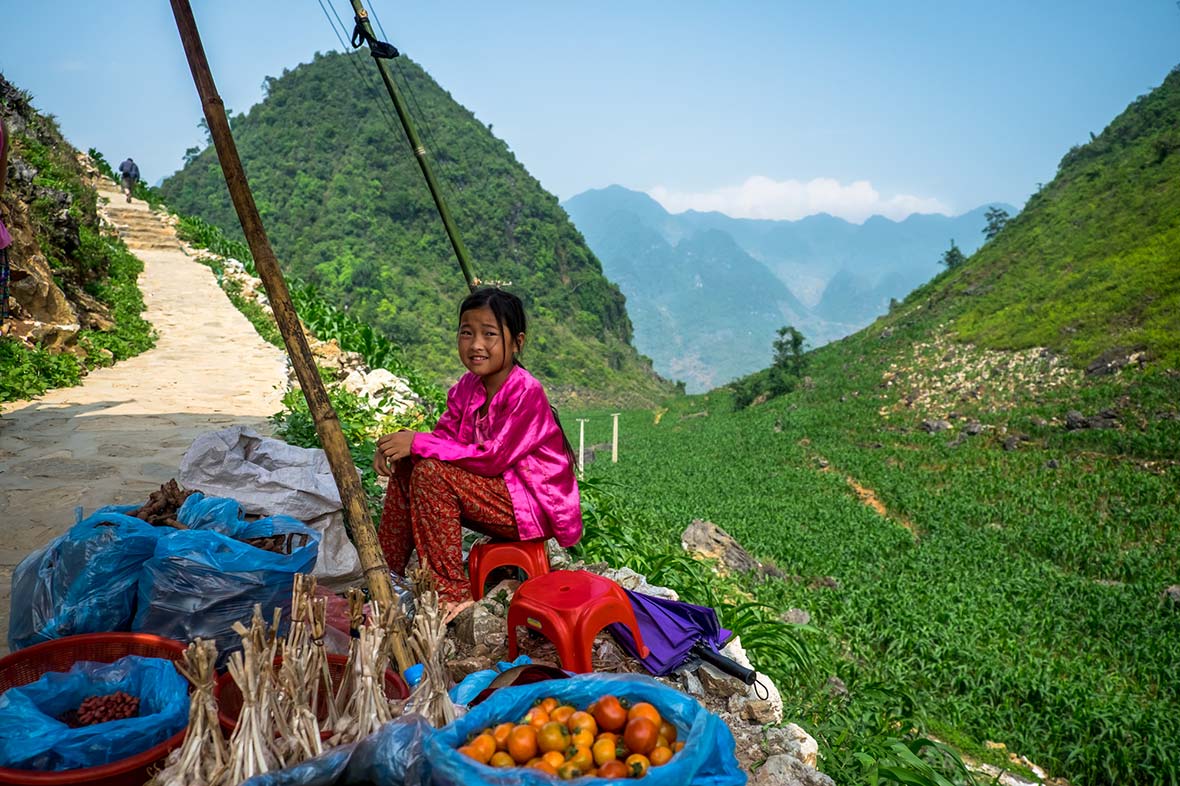
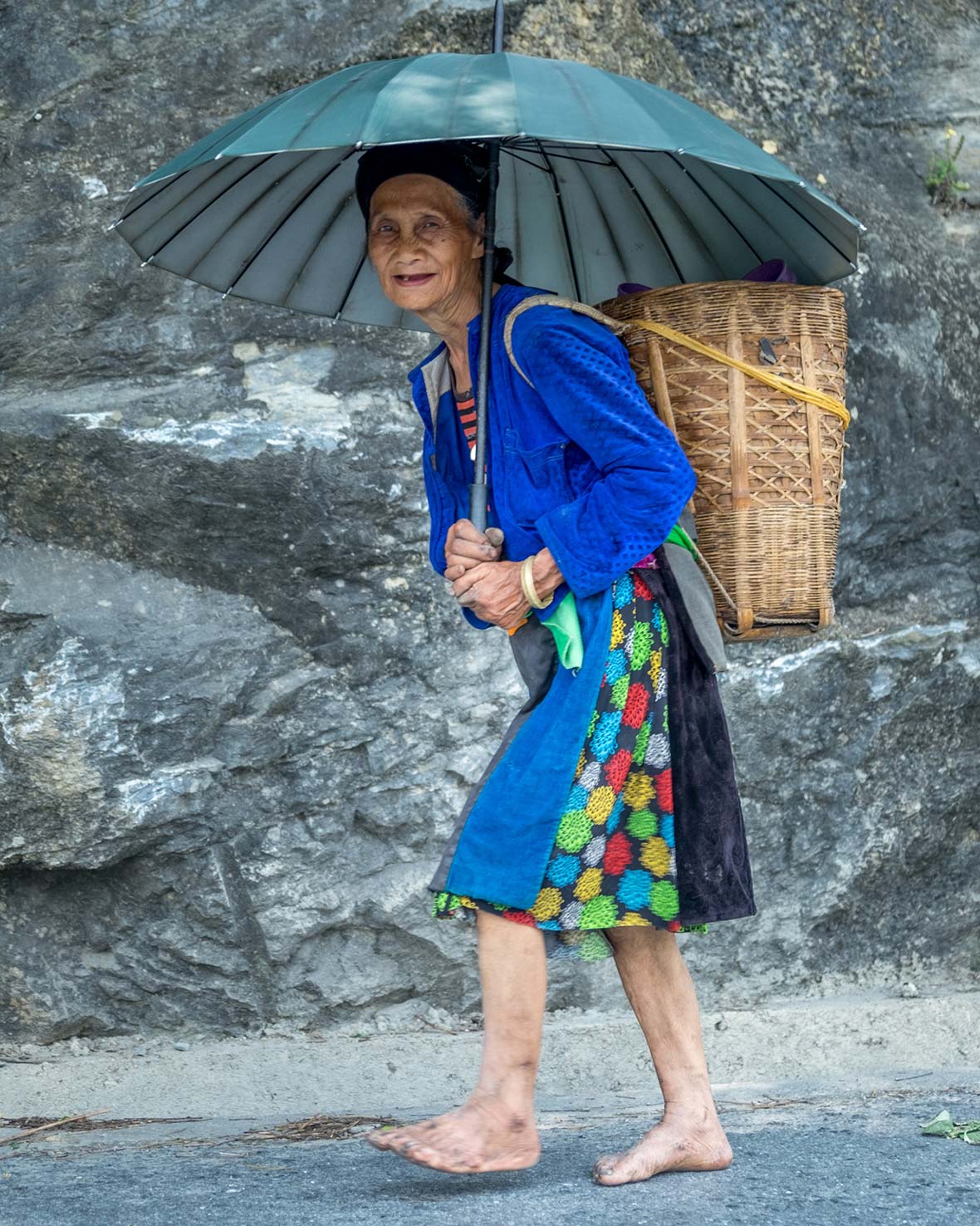
To mark this boundary, the French colonizers built a huge, 60-inch-thick door on the top of this mountain. Today, there’s only a battered sign in English and Vietnamese, shouting “Quan Ba Heaven Gate” to the ears of unforgiving mountain winds. But from this vantage point, the views over the Dong Van plateau are simply perfect.
Descending upon the village of Tam Son, I find myself gaping at a series of mound-shaped hills. Two of them are almost identical and rise very next to each other… very much like the uncovered breasts of a buried giantess.
“You are right: locals call them the ‘fairy bosoms,’” explains another young Vietnamese motorist who stopped to snap a picture.
I hope he’s joking about the bosoms, but he’s not. He’s traveling for work to check the radio towers that connect these highlands to the world. We share laughter and a table in Tam Son, ordering fried noodles and beer, a nice interlude before parting ways along the serpentine Mien River.
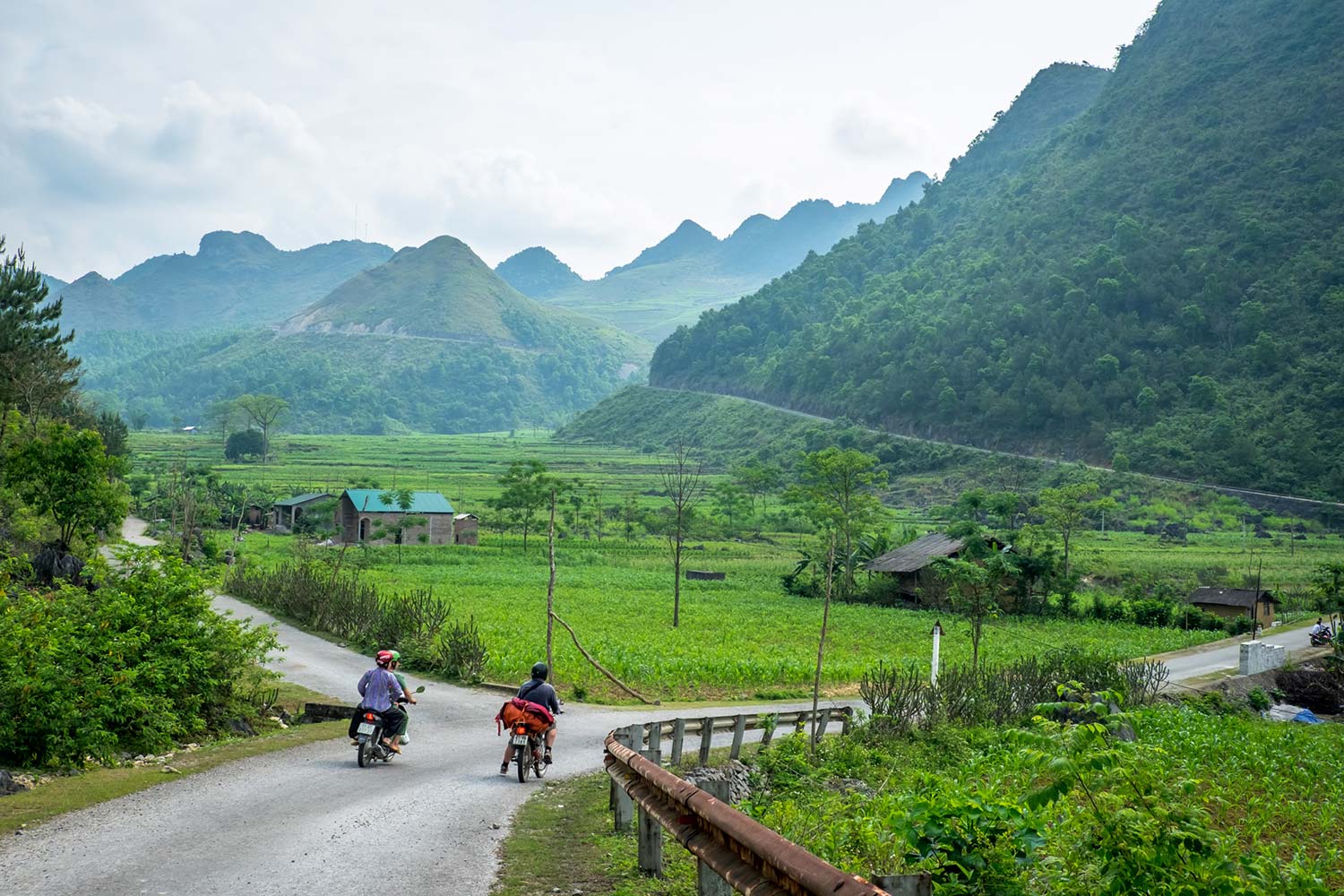
I’m speeding to Yen Minh, my destination for the day. As the road rises again from the valley, the horizon breaks into a forest of limestone peaks extending to China.
Yen Minh is a one-horse town with no great nightlife, and it’s a good thing, for I must rest well to tackle my next day’s task: the 43 miles to Dong Van via Meo Vac.
This is some of South-East Asia’s most stunning mountain landscape and is better savored slowly, stopping at every curve to admire the surreal rock formations that dot every inch of the landscape.
Cut by a series of switchbacks and viewpoints perched high above a fantasy-like backdrop of limestone peaks, the mountains here look like they were petrified in a game of hide and seek. As I ride, the scenery reminds me of a classical Chinese painting, with all the stereotypical mist, cone-shaped rock pinnacles, green moss, and the odd, lonely villager standing alone atop gravity-defying limestone corners.
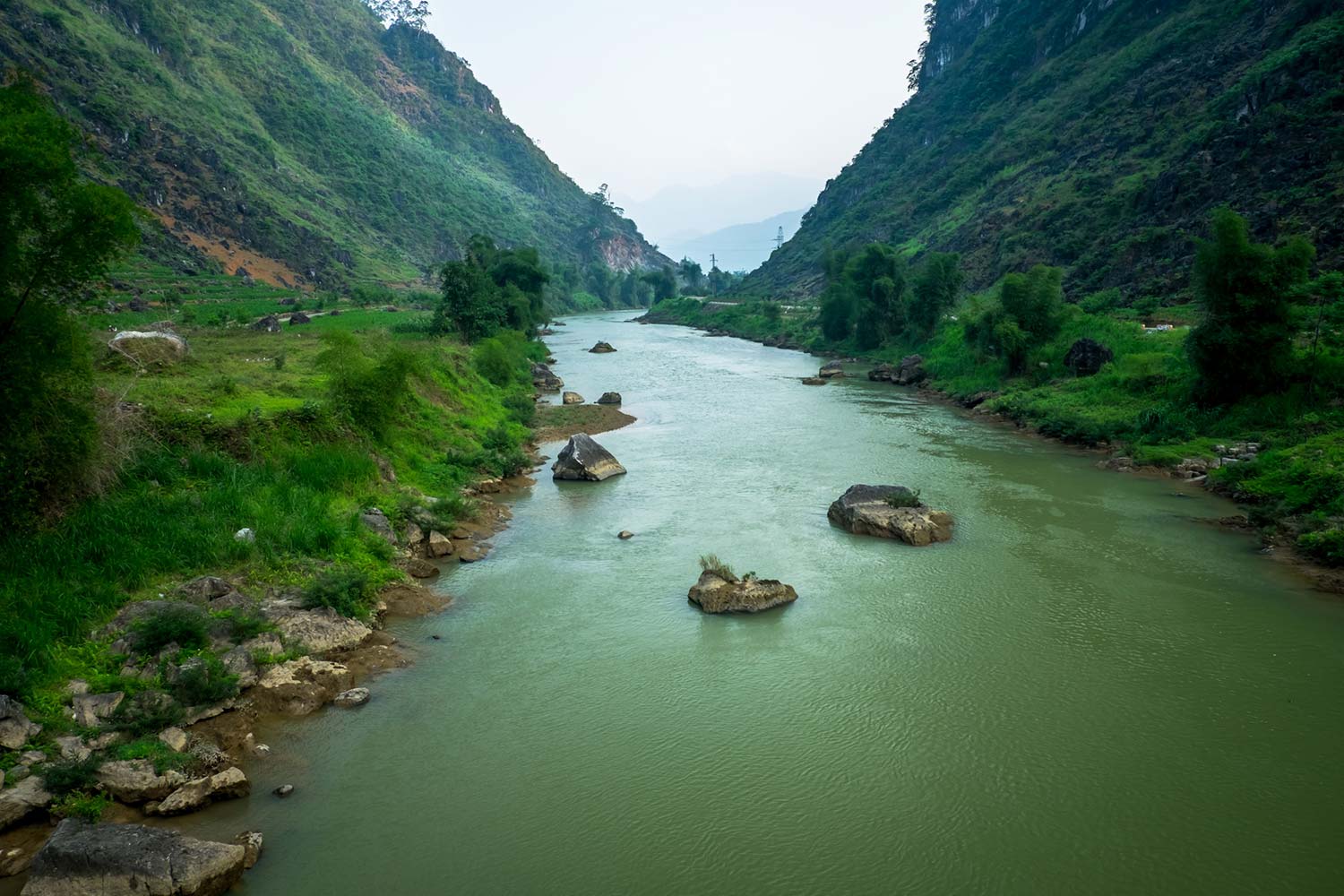
As the French recognized, this treeless land was still under the reign of the Hmong, who started migrating southward from China in the 18th century. Ten miles before Dong Van, I take a short diversion, stopping my wheels at the charming wooden palace of the Hmong king. Built with earnings from the opium trade, Ha Giang’s former lifeline, this small but opulent castle is empty and welcoming, its three stone courtyards shaded by a patch of mountain forest. I spend time traipsing between each room, observing the everyday objects, photographs, and kitchenware that evoke the past life of one of the world’s lesser-known monarchs.
Back on the road, Dong Van is a relaxed village worth a coffee break. But it’s the following 14 miles to Meo Vac where the Ha Giang loop gives its very best, climbing slowly over viridian Ma Pi Leng Pass. Halfway there, I stop at a viewpoint towering above a vertical rock wall: the cliff plunges for a couple of hundred meters to a deep river valley, the steepest I’ve seen along this ride. I take my time to marvel at the beauty of it all because I already know that once in Meo Vac—a one-horse town of new, tall buildings at the side of a dusty road—this magnetic scenery will become just another fading memory of miles past.
On my third and last day, I wake up in Meo Vac to ride the 95 miles back to Ha Giang, completing the loop through a lower valley that re-connects at Yen Minh. Compared to the fairy-tale pinnacles soaring between Dong Van and Meo Vac, riding here is far from breathtaking. But again, I enjoy zooming past the viridian countryside, and I cannot complain too much if that doubtful God didn’t leave his best creations for last.
